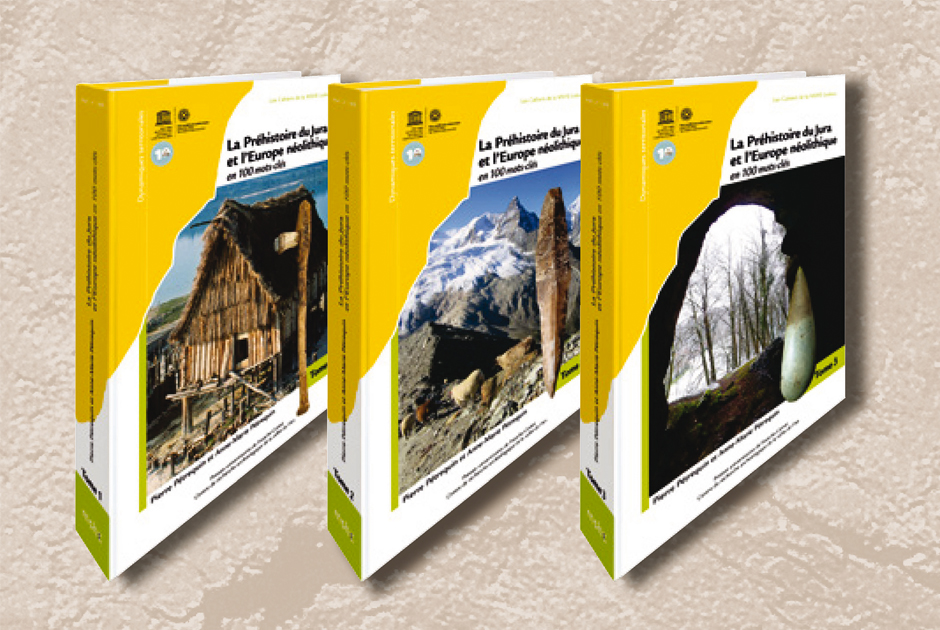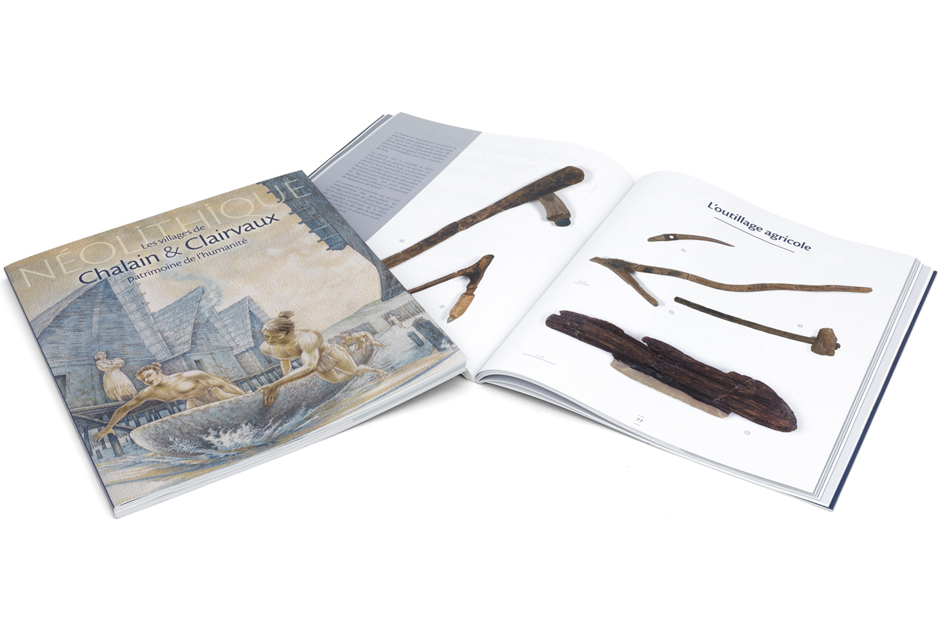
During the winter of 2020/2021, commissioned by the Aargau Kanton Archaeological Department, professional craftspeople (re)produced a “new” pile dwelling house at the Hallwiler Lake in Seengen. At the same spot, on the Seeweg near the Männerbad, stood an older pile dwelling house, that was (re)created in 1988 and had unfortunately started to sink into the ground. The building had suffered to such an extent, that it could not be repaired and saved. The Aargau Kanton Archaeological Department decided, with the support of the town of Seengen, the Burghalde Lenzburg Museum and the Rotary Clubs of Lenzburg and Lenzburg-Seetal, to build a replacement at the same spot.
The new pile dwelling house is based on the archaeological finds of the site of Seengen-Riesi, located in sight of the reproduction. In 1923, the site was researched by the Historic Society of Seetal, led by Reinhold Bosch, and revealed excellently preserved wooden construction elements. The archaeological site Seengen-Riesi is not visible in the water today, and together with the site of Beinwil-Ägelmoos, belongs to the UNESCO World Heritage Site of “Prehistoric Pile Dwellings Around The Alps”. The official opening celebration of the new construction is planned for the summer of 2021. Additional digital information materials are also in production

PalaFitFood
Cooking like the pile dwellers – the food blog for the ten year UNESCO Pile Dwellings anniversary
What were people eating in the pile dwellings, and how did they cook their meals? Our blog’s theme “Science of the Stomach” , not only presents you with hard facts about pile dwelling archaeology, but also with suggestions for recipes, and cook-off challenges for the foodies among you
PalaFitFood – Science of the Stomach
Cooking with regional and seasonal ingredients – what is edible and how can I prepare it? This question is of universal concern, both in the ancient past, as it is today. The pile dwelling sites have been under water, in an oxygen-poor environment, and the quality of preservation of organic materials is exceptional. Only because of this, can our archaeologists discover so many details on the topic of food and nutrition of the Neolithic and the Bronze Age. We present you some of this knowledge in our food blog PalaFitFood , in everyday language and in small, bite-sized snacks. Recipes and cook-offs are meant to inspire every foodie, connoisseur and home-chef, to participate and to experiment with us
New publication: Les sites palafittiques de Savoie et Haute-Savoie inscrits au patrimoine mondial de l’unesco

The new publication by DRAC Auvergne-Rhône-Alpes presents the prehistoric settlements along the shores of alpine lakes in the Savoie and Haute-Savoie Regions. It celebrates the ten-year jubilee of the inscription of the “Prehistoric Pile Dwellings around the Alps” into the UNESCO World Heritage List and documents the two years of the recent French presidency of the International Coordination Group (ICG) that manages and monitors the 111 monuments that were included in the list. This is the first monograph about the pile dwelling sites along the shores of Lake Genève, Lake d’Annecy, and Lake d’Aigueblette, and it was written for the general public.
For more information click here
New Publication: La Préhistoire du Jura et l’Europe néolithique en 100 mots-clés

After more than fifty years of archaeological research, forty of them on Chalain and Clairvaux – two sites of the UNESCO World Heritage “Prehistoric Pile Dwellings around the Alps” – Pierre Pétrequin und Anne-Marie Pétrequin offer a new perspective on the rise of the first agricultural communities in the Jura Mountains and the Saône Valley, between 5300 BC und 2100 BC. Based on the artifacts and the tools that were recovered, the two Neolithic specialists investigate various interpretations of their possible social and spiritual contexts, and of the lifeways of Neolithic populations. The discussion extends over three volumes with rich images, a glossary of a hundred keywords, and a presentation of some exceptional pile dwelling sites.
Pierre Pétrequin and Anne-Marie Pétrequin, La Préhistoire du Jura et l’Europe néolithique en 100 mots-clés. Besançon, Presses universitaires de Franche-Comté / Gray, Centre de recherche archéologique de la vallée de l’Ain, 2021, 3 tomes : 1942 p. (PUFC, n°
1500 ; collection « Les cahiers de la MSHE Ledoux », n° 44).
Prices for three Volumes : 133,00 € + Shipping
Order
Librairie archéologique
CS 50090, 1 rue des Artisans,
21803 Quétigny cedex,
France
Reference: 53544
Tel. 03 80 48 98 60
infos@librairie-archeologique.com
Exhibition Volume: Néolithique. Les villages de Chalain et Clairvaux, patrimoine de l’humanité

The book „Neolithic. The World Heritage villages of Chalain and Clairvaux” documents the current exhibition of the same title, at the Museum of Lons-le-Saunier (Jura, France).
The state of preservation at both pile dwelling sites is exceptional. In recognition of their international cultural value and the necessity of their preservation, they were included in the UNESCO World Heritage List of 2011, as part of the “Prehistoric Pile Dwellings around the Alps”. Both the book and the exhibition focus on the advancement and the quality of research that has taken place over the last fifty years.
The book is illustrated with over a hundred color images and is written for the general public.
GREFFIER-RICHARD Annick and LOURDAUX-JURIETTI Sylvie (Dir.), Neolithique. Les villages de Chalain et Clairvaux, patrimoine de l'humanité. Musée de Lons-le-Saunier, 2021, 144 S.
Price: 19,00 €. Available at the counter of the Museums, or order by mail at musees@lonslesaunier.fr